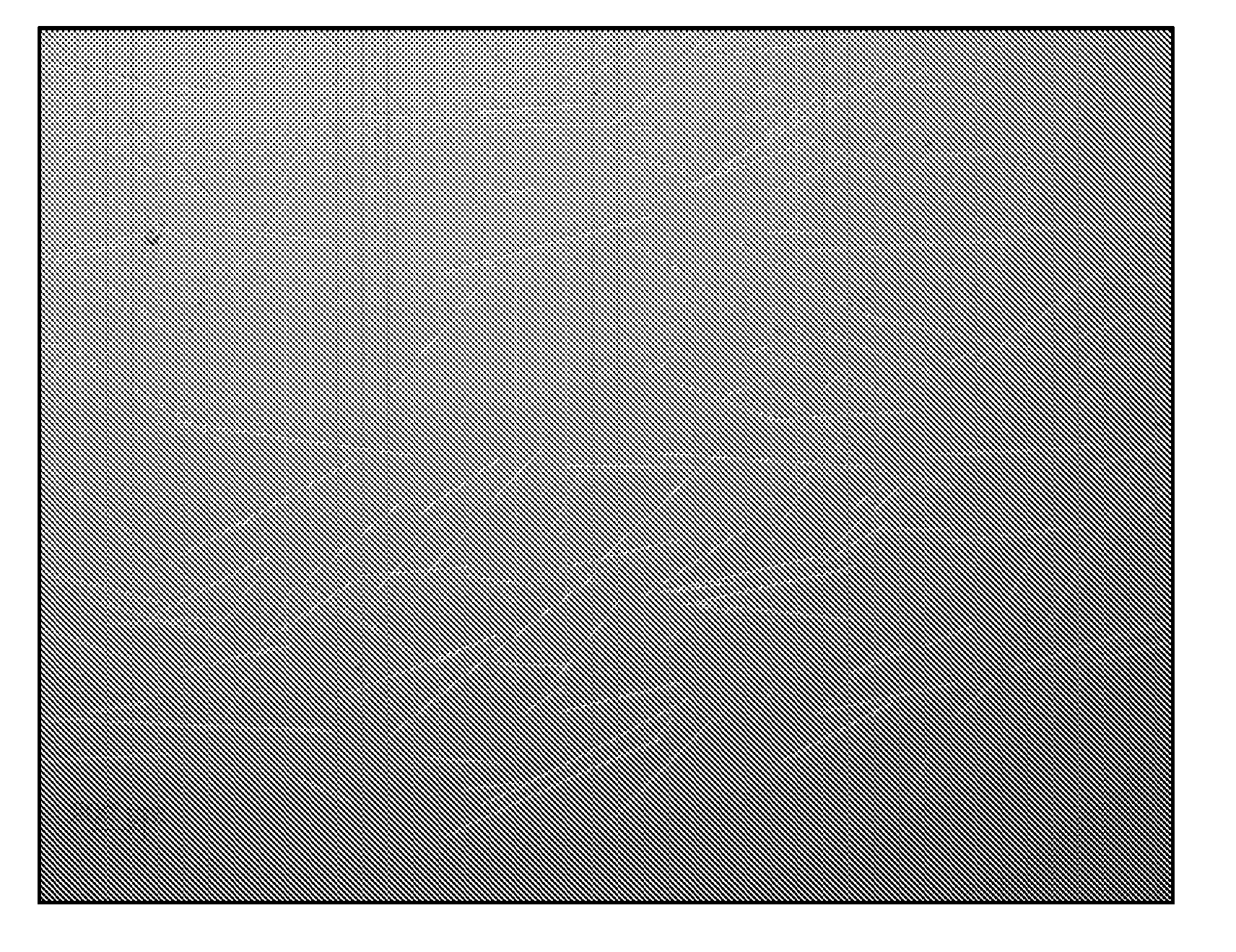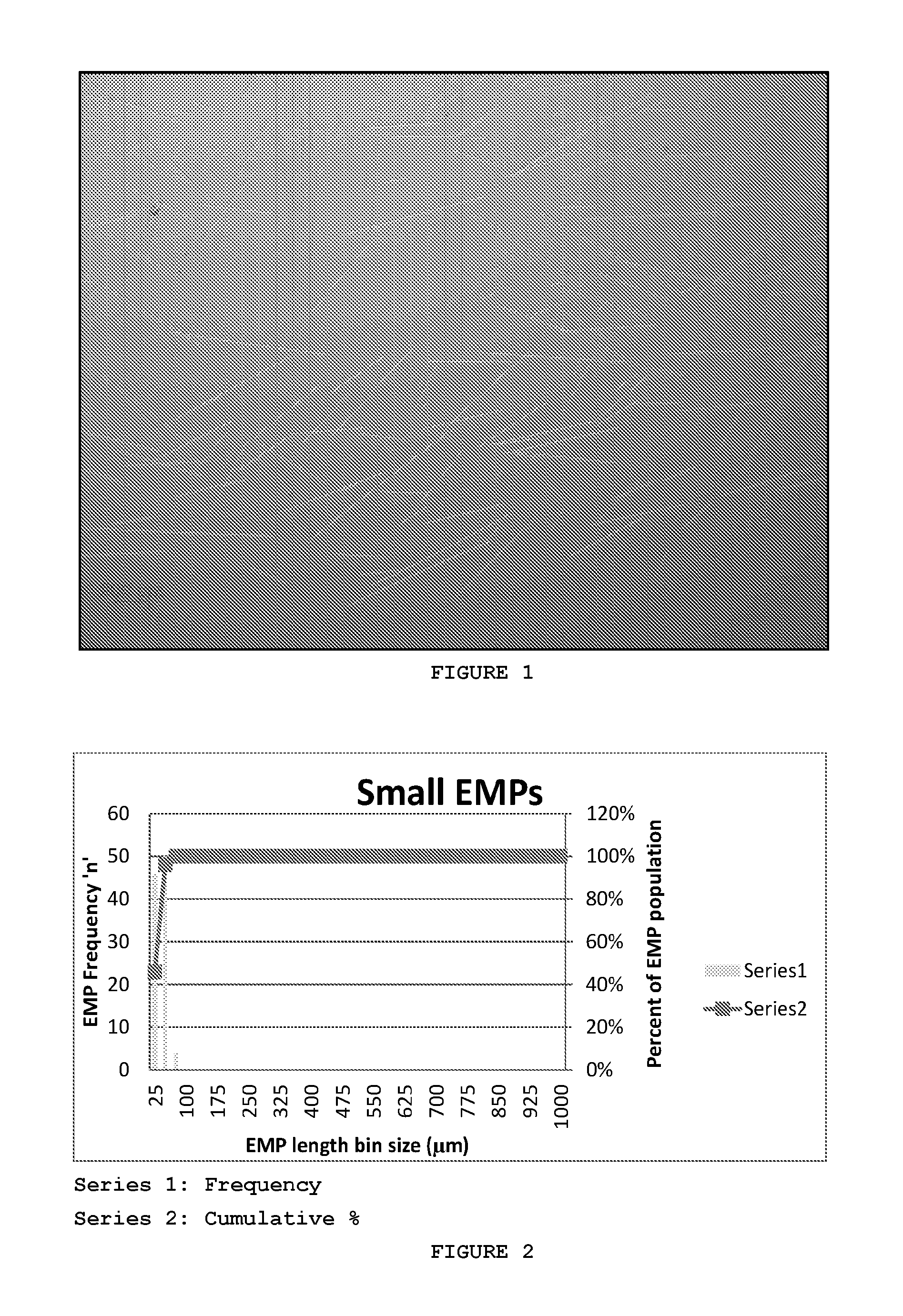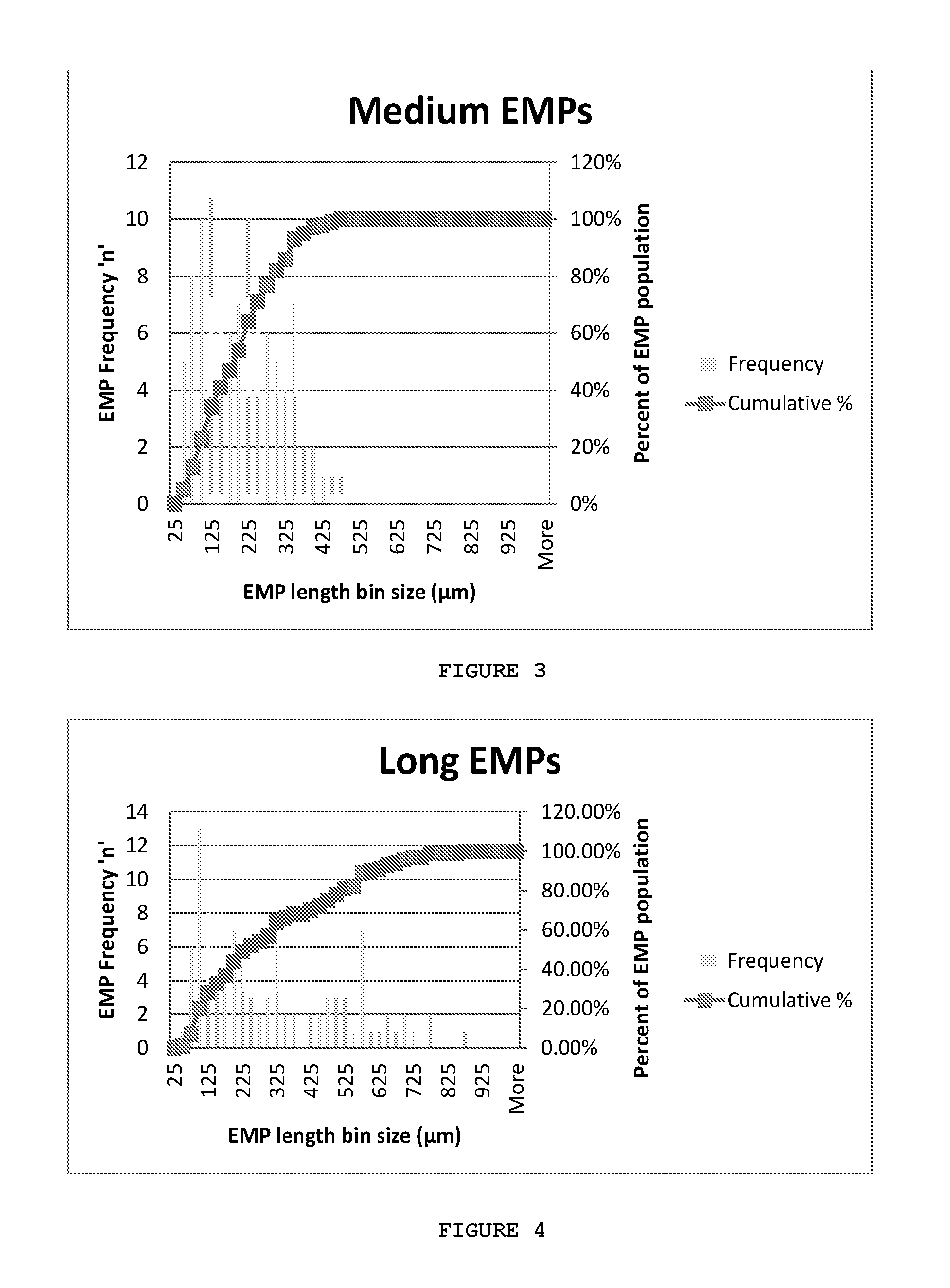Method and composition for delivering a compound through a biological barrier
- Summary
- Abstract
- Description
- Claims
- Application Information
AI Technical Summary
Benefits of technology
Problems solved by technology
Method used
Image
Examples
example 1
Transdermal and Transmucosal Delivery of Sodium Fluorescein Dye Using EMPs of Varying Length and Application Force
[0078]EMPs were fabricated using two different methods (one technique for the ‘short’ and another for the ‘medium’ and ‘long’). The first method used high energy ball milling to micronize 20 mg of glass wool. The samples were placed in a 2 ml lysing matrix tubes with 40 mg of 1.4 mm ceramic beads (MP Biomedicals, USA) and milled for 45 seconds (Bio 101 FastPrep FP120-120V, Thermo Savant, USA). A sample of the EMPs was assessed using stereomicroscopy and the milling process repeated if necessarily to achieve the desired size range (<50 μm). The process was repeated until the desired amount of ‘short’ EMPs was produced.
[0079]The medium and longer length EMPs were fabricated using an in-house micro-chopping technique. Glass wool was spread evenly over a chopping board forming an approximate 1 mm layer. A stainless steel circular punch, 350 μm (‘medium’) or 750 μm (‘long’) i...
example 2
Angle of Penetration of EMPs and Comparison of EMPs with Fixed Substrate Microneedles
[0087]Example 2 demonstrates that low angle EMP penetration enhances the delivery profile of bioactive compounds.
[0088]Example 2 is an exemplary embodiment of EMPs to illustrate that low angle EMP penetration at least results in maximal disruption and delivery within the skin compared to perpendicular fixed substrate microneedle application.
[0089]FIGS. 9a and 9b are micrographs of EMPs obtained by Scanning Electron Microscopy. The EMPs presented in this example had a diameter of 9.3±0.9 μm (mean±SD) (FIGS. 9a and b). Two different populations were fabricated that resulted in either a ‘short’ EMP distribution as illustrated in FIG. 9a or ‘long’ EMP distribution as shown in FIG. 9b. FIG. 9c illustrates mean length distribution of “short” EMPs and “long” EMPs. The ‘short’ EMPs had an approximate mean length of 27.5±9.8 μm with 50% of the population being between 20.9 μm and 32.6 μm in length (FIG. 9c)....
example 3
Delivery of Small Molecules and Vaccines
[0115]Example 3 illustrates enhanced delivery of sodium fluorescein, Vitamins A, B3 and E and the photodynamic therapy drug aminolevulinic acid by using EMPs of the disclosure. It also demonstrates an enhanced immune response to a DNA vaccine when the vaccine is delivered using EMP compared to intramuscular delivery.
[0116]Referring to FIG. 16, the quantification and delivery profile of sodium fluorescein, Vitamins A (3H-all-trans retinoic acid), and B3 (3H-nicotinamide) are shown when delivered using topical application (No EMP), short EMP and long EMP. Vitamin B3 (3H-nicotinamide) has been recently shown to prevent non-melanoma skin cancers and is a potential treatment for reversing skin photoageing. Excised pig ears sourced from a local abattoir were washed with soap and water followed by rinsing. The ears were stored at −20° C. until required. The ears were thawed and then gently shaved to remove excessive hair, then rinsed and pat dried. T...
PUM
| Property | Measurement | Unit |
|---|---|---|
| Length | aaaaa | aaaaa |
| Length | aaaaa | aaaaa |
| Length | aaaaa | aaaaa |
Abstract
Description
Claims
Application Information
 Login to View More
Login to View More - R&D
- Intellectual Property
- Life Sciences
- Materials
- Tech Scout
- Unparalleled Data Quality
- Higher Quality Content
- 60% Fewer Hallucinations
Browse by: Latest US Patents, China's latest patents, Technical Efficacy Thesaurus, Application Domain, Technology Topic, Popular Technical Reports.
© 2025 PatSnap. All rights reserved.Legal|Privacy policy|Modern Slavery Act Transparency Statement|Sitemap|About US| Contact US: help@patsnap.com



